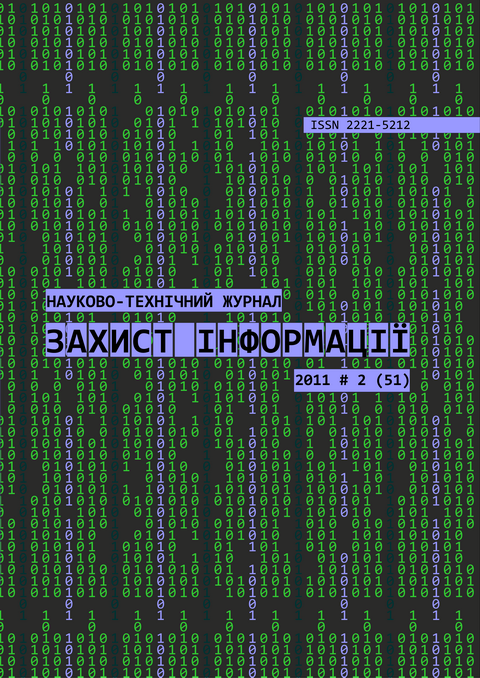МЕТОДИКА ОЦІНКИ ІНФОРМАЦІЙНИХ РИЗИКІВ ПІДПРИЄМСТВА
DOI:
https://doi.org/10.18372/2410-7840.13.2008Abstract
Пропонується методика оцінки інформаційного ризику підприємства як послідовність аналізу його структури, визначення граничного ризику його підрозділів, аналізу його інформаційної інфраструктури з подальшим накладенням її на організаційну структуру підприємства, визначення ризикової вартості автоматизованих систем, що використовуються в роботі підприємства, оцінки активів підприємства, ймовірність реалізації загроз для його автоматизованих систем, визначення ризику для окремих підрозділів підприємства.References
BS ISO/ IEC 27005:2008 Информационные технологии - Методы обеспечепия безопасности – Управление рисками информационной безопасности.
Андрєєв В.І., Хорошко В.О., Шелест М.Є. Основи інформаційної безпеки / за ред.. проф.. В.О. Хорошка. 2-е вид., доп. і перероб. – К.: ДУІКТ, 2009. – 292 с.
Петренко С.А. Управление информационными рисками. Экономически оправданная безопасиость / Петренко С.А., Симонов С.В. - М.: Компания АйТи: ДМК Пресс. 2004. - 384с: ил. - (Информационные технологии для инжеперов).
Downloads
Issue
Section
Articles
License
Authors who publish with this journal agree to the following terms:- Authors retain copyright and grant the journal right of first publication with the work simultaneously licensed under a Creative Commons Attribution License that allows others to share the work with an acknowledgement of the work's authorship and initial publication in this journal.
- Authors are able to enter into separate, additional contractual arrangements for the non-exclusive distribution of the journal's published version of the work (e.g., post it to an institutional repository or publish it in a book), with an acknowledgement of its initial publication in this journal.
- Authors are permitted and encouraged to post their work online (e.g., in institutional repositories or on their website) prior to and during the submission process, as it can lead to productive exchanges, as well as earlier and greater citation of published work (See The Effect of Open Access).

